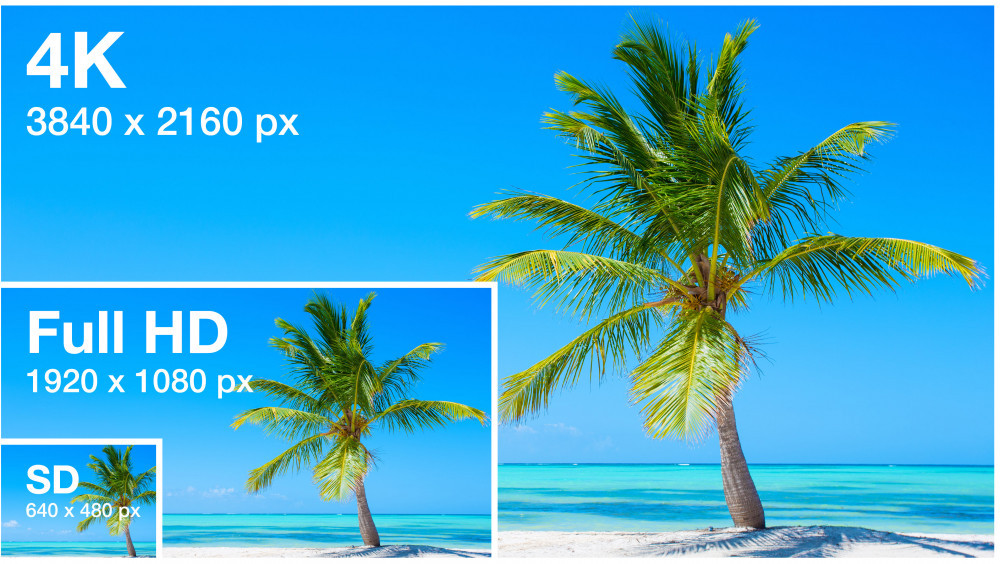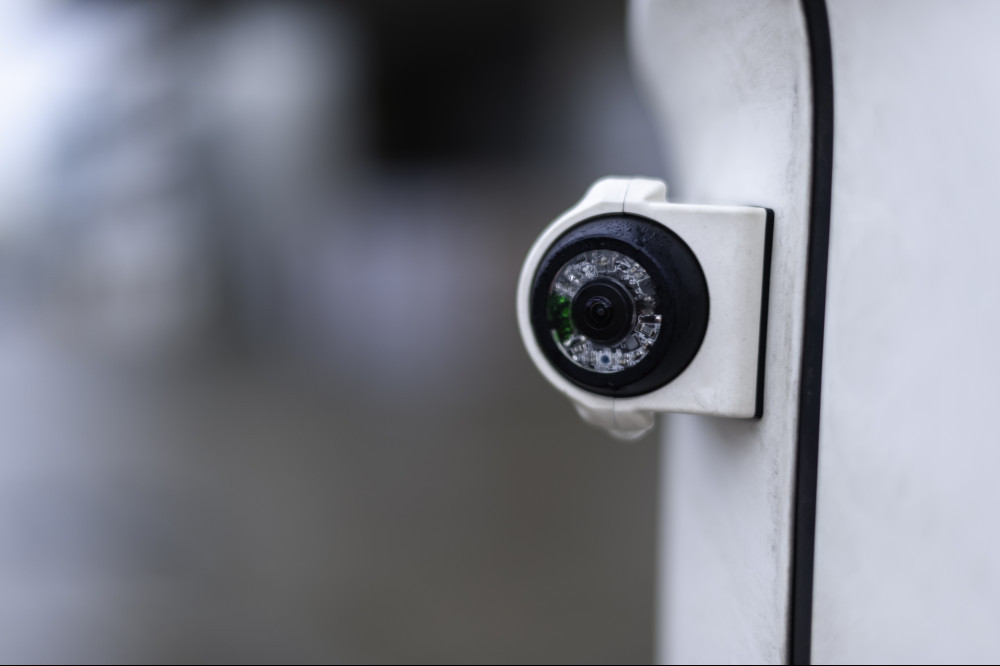If you look into dash cams long enough, eventually you come across the term MDVR which stands for Mobile Digital Video Recorder. Basically, an MDVR is a DVR designed to be installed into vehicles.
Now that you know what a MDVR is, the next question to answer is: What is the difference between a MDVR and a dash cam? In this article I will explain how MDVRs and dash cams differ.
Video Resolution
One of the first things you’ll notice when comparing dash cams to MDVRs is that dash cams typically have cameras with a higher resolution than those that come with MDVRs
A lot of dash cam manufacturers are offering dash cams with at least one camera, usually the front camera, having 4K UHD resolution. To date, I’ve only seen Full HD 1080P cameras offered with MDVRs.
This is pretty understandable when you know how much storage 4K videos take up and the fact it’s common for a MDVR to support anywhere between 4 – 8 cameras. In my current dash cam, 1 minute of 4k video takes up approximate 400MB.
One minute of footage from 4 to 8 cameras would take up approximately between 1.6GB and 3.2GB. 4K video eats up storage space like it’s candy. You would need a lot of storage for eight 4K cameras or you would burn through all the read/write cycles a lot faster on your micro SD card causing it to fail sooner.
On the other hand, 1080P resolution is four times less than 4K resolution. Four 1080P cameras would only take up about the same amount of storage as one 4K camera.
Where the Main Unit is Mounted
Dash cams are typically mounted on a windshield while MDVRs are designed to be mounted somewhere in the vehicle cabin. The main unit of dash cameras are smaller than MDVRs and lend themselves to being mounted on the windshield.
Furthermore, the main unit of dash cams will usually house the main, forward facing camera and sometimes a rear-facing camera that shows what is going on in the passenger cabin, depending on what model dash cam you buy.
With the forward facing camera being housed in the main unit, mounting the main unit on the windshield is a necessity in order for the forward facing camera to do its job of providing coverage to what is happening in front of your vehicle.
Of course there are some exceptions. At least one dash cam manufacturer offers a camera with a type of extension cable that allows you to mount the dash cam main unit up to eight inches, if I remember correctly, away from the camera lens.
Why Are Dash Cams Designed to be Mounted on Windshields?
I suspect dash cam manufacturers design their products to mount on windshields to reduce the cost and installation complexity. Built-in cameras to the main unit are likely cheaper because they don’t need the added components that would go into connecting an external camera to the main unit.
Additionally, installing a dash cam on the main unit can be as easy as peeling the adhesive backing off the dash cam unit and sticking it on your windshield. Contrast this with having to find a place, and a way, to mount the unit security and then finding a way, and place to mount your cameras. This is a lot of extra hassle that your typical dash cam user doesn’t wan to deal with.
Why Don’t MDVRs Mount on the Windshield?
As mentioned earlier, MDVRs are designed to be mounted in a location within the passenger cabin. The main unit of a MDVR is much larger and bulkier than a typical dash cam.
They have to be larger to accommodate the connections from the external cameras which can be up to as many as eight, possibly more, cameras. MDVRs also have video connections for external monitors, GPS connectors, etc. There’s a lot going on with a MDVR and it’s just bigger.
Mounting this large of a unit on a windshield would be impractical and dangerous. It’s one thing to mount a fairly lightweight and compact box on a windshield. It’s quite a different thing to mount a heavier box that takes up much more space.
I definitely wouldn’t want to be hit by a MDVR unit flying off a windshield in the event of a crash nor would I want it blocking my view while I’m driving.
Since MDVRs don’t have a camera built into the main unit, it makes sense to manufacture them so they can be mounted anywhere in the passenger cabin. You already have to route the camera cables to it, so it really doesn’t matter where you route those cables.
By not mounting the main unit on the windshield, MDVRs are more discreet and they don’t have the sun beating down on them all day which eliminates the type of heat issues you see with dash cams that are mounted on the windshield.
Other Differences Between MDVRs and Dash Cams
External Monitors
Most MDVR systems come with an external monitor you can use to monitor the videos of the dash cam. Typically the best you’ll get with a dash cam are LCD screens built into the main unit.
Dash cams may have a video out that you might be able to connect to an external monitor/screen, but you would have to research and buy a compatible monitor as dash cams typically don’t ship with external monitors. MDVRs, on the other hand, seem to come with monitors in most cases.
Number of Cameras
I already touched on this briefly in the resolution section, but I wanted to expand a bit more on it. Dash cams usually have 1 to 4 cameras while MDVRs will typically support between 4 – 8 cameras. There’s nothing to stop you from hooking up only one camera to a MDVR, but you would probably be better suited purchasing a dash cam at that point.
As you can see, there is some overlap in the number of cameras supported by MDVRs and dash cams.
Camera Types
Dash cam cameras are typically designed to be mounted inside the passenger cabin which means they’re not waterproof. It is possible to find dash cams that are waterproof, but they tend to be targeted at motorcycle and ATV users and designed to be mounted on those types of vehicles.
MDVR cameras are designed to be used on the outside of vehicles and to withstand wet conditions such as rain. There’s no way to provide full coverage around a semi-truck with the cameras just mounted in the cab which means they’re mounted outside and designed to be handle the weather.
Target Market
MDVRs seem to be targeted towards commercial drivers such as semi-truck, bus drivers, or the companies that employ commercial drivers. Dash cams are typically targeted towards the drivers of passenger vehicles.
Storage Capacity
The MDVRs I see online typically have a supported capacity of up to 512GB contrasted to a max capacity of 256GB or less on most dash cams.
Price
MDVRs tend to be more expensive than regular dash cams. However, you’re also getting more cameras, the ability to mount the cameras outside, a main unit that doesn’t have to go on the windshield, external monitor, etc. If you need these items, then the MDVRs are surprisingly inexpensive for what they offer.
MDVR Use Case in Passenger Cars
Personally, I stumbled across MDVRs when I was looking for a way to catch people who slam their car doors into mine in parking lots. Other people online have had success using dash cams and mounting the camera, so it faces out the passenger window. However, I wanted a camera to mount on my side mirrors that pointed down the side of my car.
I received some good ideas, such as using a motorcycle cam and mounting the main unit inside the vehicle and running the cables to the side mirrors. When I came across MDVRs I was fascinated with idea of potentially having two cameras on each side mirror: one facing forward and the other facing rear.
I was going to go the motorcycle cam route, and even had the camera, but I moved before I got the chance to install it and it’s now sitting in storage. Now I plan on buying a MDVR to install since there’s no use in buying the same camera twice.
Having extra cameras in your car, whether they’re on the side mirrors or facing out your side windows, helps you gain additional video coverage that you might not get with just a front and/or rear camera.
Conclusion
To summarize, MDVRs and dash cams have many similarities, but ultimately MDVRs are targeted towards commercial drivers and dash cams are targeted towards the drivers of passenger vehicles. You can definitely use MDVRs in passenger vehicles if you want, but most of the time other dash cams are going to be able to meet your needs at a lower price point.
